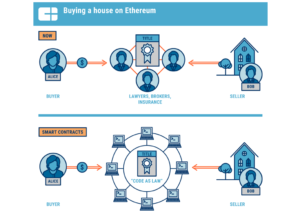
This post is a continuation of the Mobile Age of Real Estate series. Click here to start reading from the beginning.
The biggest problem in GTA real estate over the last few years has been the lack of housing supply. You probably thought I was going to say housing affordability, didn’t you? Well let me explain why I know the problem is specifically the lack of housing supply, with the affordability of homes currently on the market being a direct result of that problem.
Now as someone that has never taken an ECON 101 class, it’s obvious to me that basic supply and demand is at play here. The demand for real estate in the region has been insane, with the Greater Toronto Area seeing an increase in sales every year from the year 2012 (85,496) to the year 2016 (113,133). This trend would have continued in 2017 if not for some interference by the Ontario government, coming in the form of a foreign buyer’s tax, rules around rent control and a few other policies unhelpful to property owners. Either way, sales in 2017 were still around 2014 levels (92,286), with home prices rising from $497,130 in 2012 to $822,580 in 2017. But, according to data from the Ontario Home Builders Association, housing starts (that’s new homes built) in 2018 had dropped by 5.2% from their levels in 2015. Supply has not kept up with demand and, as a result, home prices (and yes rental prices as well) have skyrocketed. The challenge of affordability is a result of the lack of housing supply.
Demand for housing has affected home builders too, with labour and construction costs having increased along with demand. This makes building homes on site too expensive for some home builders and adds to our problem of low housing supply. We need a solution! My proposal is simple… start building indoors. One way to bring more housing supply to market is to reduce the costs for home builders to produce the homes consumers want and need. On site building becomes expensive when you must deal with variable costs outside of one’s control (i.e. the weather). Skyrocketing costs and a reduction in housing starts make this a great opportunity to discuss different, and more efficient, ways of building homes. Modular and manufactured homes are two method that have been proven to work.
Where site-built homes are, as its name states, homes 100% completed on the construction site, modular homes are homes built in sections, within a factory. Sections are transported to the building site and joined together on site. The sections are placed on your typical basement or crawl space foundation. Vinyl siding is mostly used for modular homes, versus brick as the preference for site-built homes; as 85-95% of the home is completed in factory and vinyl offers more affordability and is lighter in weight than brick. Manufactured homes are like modular homes in that they are 98% completed in a factory before being transported on site. Where they differ is on the foundation the home sits on. It’s not always a permanent foundation, like a basement, but often block tiers that are designed to make the home capable of being moved from site to site. Also, the preferred siding for manufactured homes are either vinyl or aluminum siding; aluminum being the most used home siding. This makes manufactured homes far less expensive to build, and buy, versus conventional site-built homes and modular homes.
A report by NAHB Research Center was prepared on behalf of the US Department of Housing and Urban Development back in 1996, and it details the following regarding costs of site-built vs modular vs manufactured homes, that are to sit on the same conventional foundation (basement or crawl space), and constructed to be the same square footage (2,000 sqft):
· There are much lower overall costs associated with building modular and manufactured homes; 50% reduction in time to build, lower labour costs, fewer materials needed
· The average 2,000 sqft modular home is 11% cheaper to purchase than a site-built home; manufactured homes are 26% cheaper
· Structure represents one of the largest cost savings; 17% for modular vs conventional and 43% for manufactured vs conventional
· Each type of building method had overhead costs—administration, marketing expenses, construction and inventory financing costs—make up a similar percentage of the final sale price (22.3%)
· Construction costs were the biggest difference in final sales price
Looking at some of these facts you would be right to wonder why site-built homes still dominate the market. If you can afford to build at a lower cost, you can afford to sell at a lower price. Items such as aluminum siding and block tier foundations are not as valued as brick (or even vinyl) siding and conventional foundations. Because site-built and modular homes are built on permanent foundations, they face far fewer land restrictions and are appraised at much higher values than manufactured homes. But this does not change the fact that modular home building still offers more attractive scalability than even conventional homes. If you can build more homes at a lower cost than you can make more money while cornering a section of the market. Seems like good logic to me! And companies like Quality Homes are working to prove just that. Quality Homes has been a modular home builder in Ontario, since 1987, that aims to scale this process. They offer assistance from beginning to end, with help in lot selection and purchase, to site excavation, to home design and finishes, to assembly and installation.
In my opinion, this is the way to build in the Mobile Age of Real Estate. We need more housing and more affordable housing at that. There are ways the government can help. One is by basically just staying away from the private sector altogether as involvement by the public sector rarely helps private businesses or consumers. Or, if they are hell bent on “helping” as the government usually is, an effort can be made to speed up the process of acquiring building permits (a problem for another day). But this is a solution where those directly involved in home building can implement their knowledge to solve a real problem. A home builder may have to sell their finished product at below market value but may also have an opportunity to corner a segment of the market desperate for housing. The end user will thank them for it…






